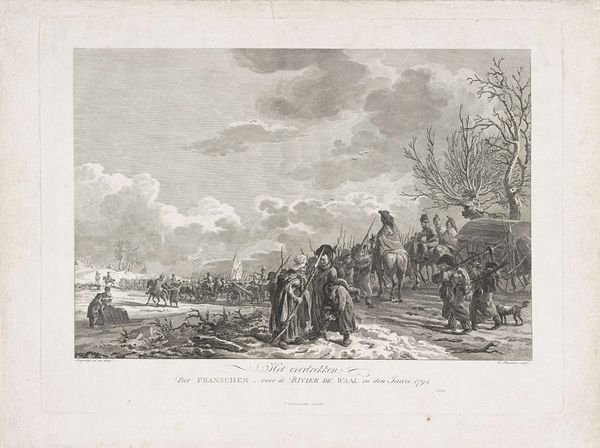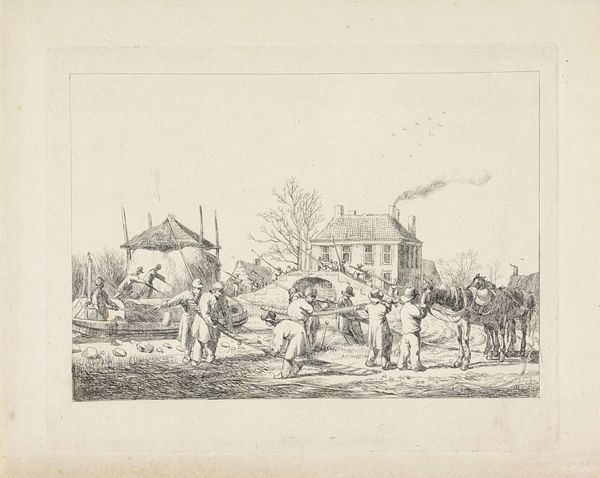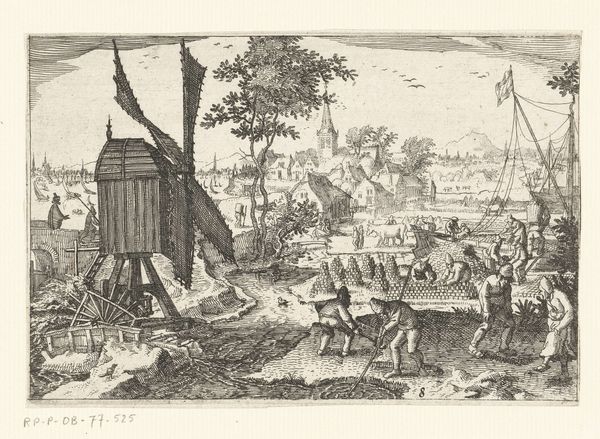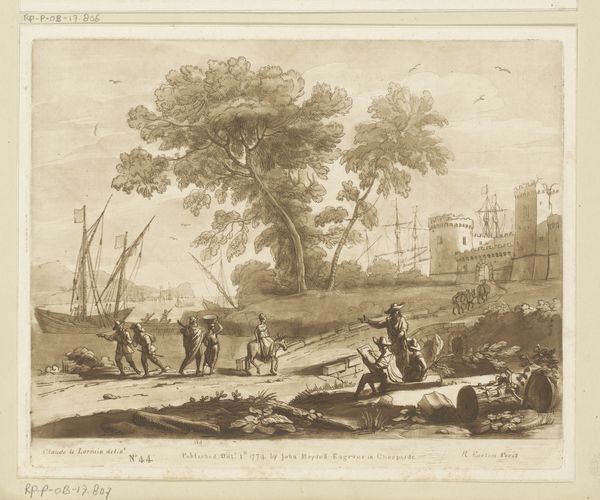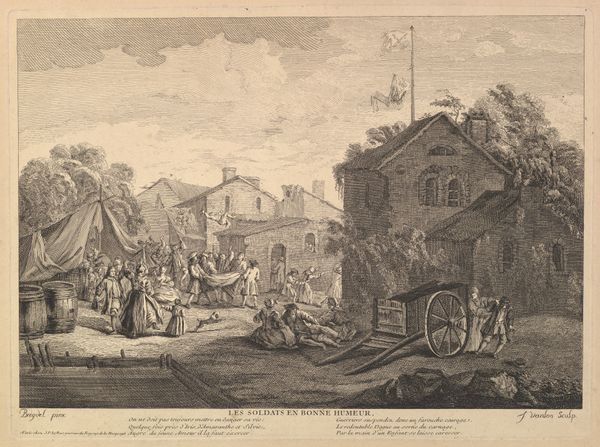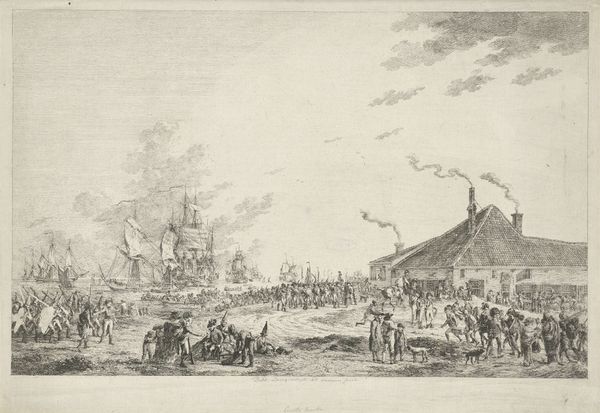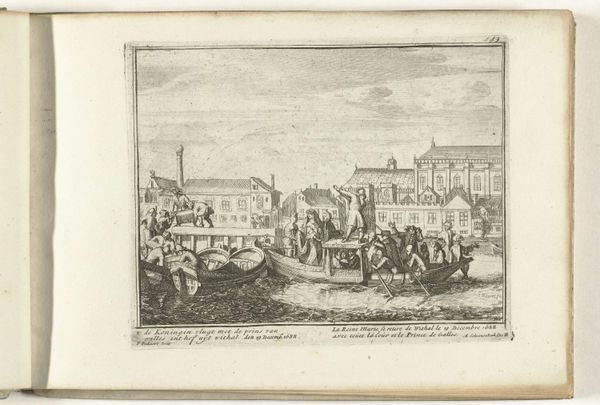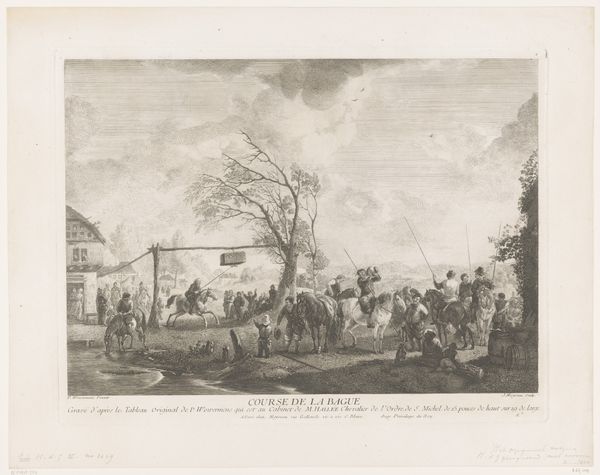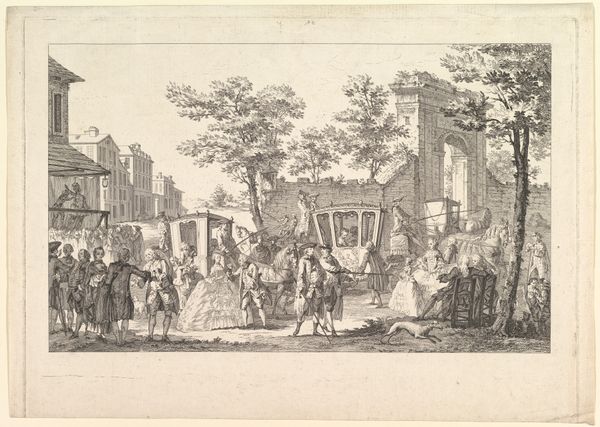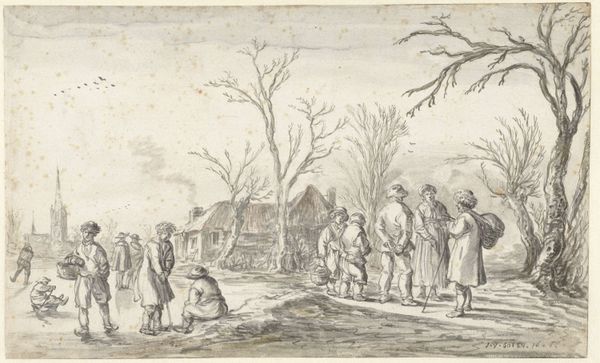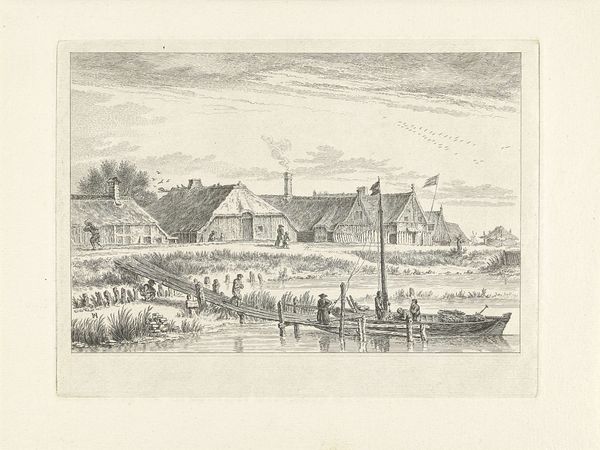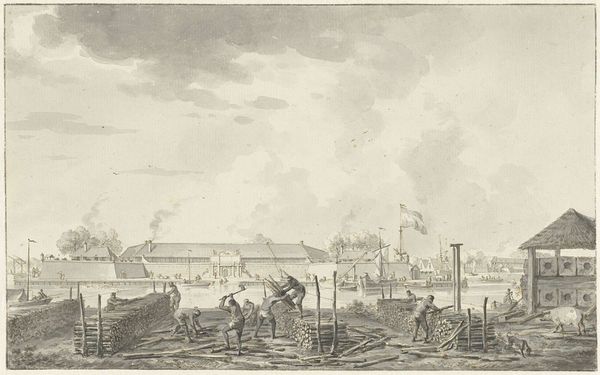
drawing, ink
#
drawing
#
dutch-golden-age
#
landscape
#
ink
#
realism
Dimensions: height 194 mm, width 257 mm
Copyright: Rijks Museum: Open Domain
Curator: This delicate ink drawing, rendered in subtle washes of gray, depicts "Karnemelksloot te Naarden, 11 januari 1814" – or the Buttermilk Canal in Naarden on January 11th, 1814. It is thought to have been created around the same time by the hand of Pieter Gerardus van Os. Editor: The atmosphere is quite serene, despite all the activity taking place. It feels stark, with those winter tones and barren trees, yet there's a busyness in the foreground that draws your eye into the everyday life of this town. Curator: Van Os expertly captures the industrious spirit and socio-economic scene during the Dutch Golden Age, portraying labor, trade and transport as an integral part of Dutch culture. Notice the careful articulation of each figure: the group carrying lumber across the frozen canal, the barge in the background, even the individuals gathered on the distant bridge. Editor: Yes, and the people almost blend into the landscape, their existence defined by collective, utilitarian pursuits. What strikes me, however, is who and what gets representation and who or what gets omitted. Why this particular slice of reality? Who commissioned it and what agenda might it fulfill in depicting these common folk doing… common things? Is this the 'everyday life' of all Dutch people in 1814 or an exercise in idealizing certain types of labour? Curator: An interesting perspective to consider! However, landscape depictions during this time played a vital role in forging a sense of national identity. Van Os, who followed in his father’s footsteps as an artist, often found patronage depicting landscapes or genre scenes featuring animals in their environs. Here we see a nation rebuilding after periods of war and unrest – in this period of upheaval, these visuals played into narratives of hard work as nation building. Editor: And yet that depiction of work… who exactly benefits? There are hierarchies subtly embedded. Are these folks able to benefit from their contributions, or are they part of a system of inequality further masked behind bucolic aesthetics? I think, perhaps, in appreciating this scene, it’s crucial to critically reflect on those unsaid, uneven histories that a seemingly “innocent” landscape may gloss over. Curator: Those are vital perspectives to remember as we navigate artwork. And thank you, because for me, I walk away with a deeper consideration for this piece's significance to both art history and broader socio-economic discourses.
Comments
No comments
Be the first to comment and join the conversation on the ultimate creative platform.
